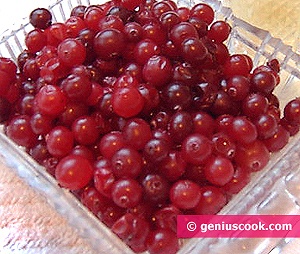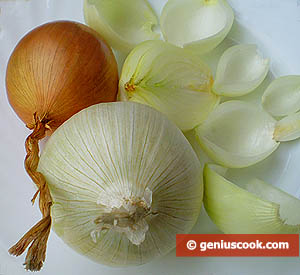Cranberry
 Cranberry is widespread along the Arctic Ocean coast and throughout northern and middle Europe as well as in Caucasian mountains, Siberia, Japan and northern North America. There are several species of cranberry. American cranberry is a showy shrub that has large berries. Northern cranberries are smaller and grow as evergreen creeping bog shrub. In Italy, cranberry occurs in the northern Apennines and the Alps at the elevation of more than 6 500 feet. This cranberry has small round or oval red berries.
Cranberry is widespread along the Arctic Ocean coast and throughout northern and middle Europe as well as in Caucasian mountains, Siberia, Japan and northern North America. There are several species of cranberry. American cranberry is a showy shrub that has large berries. Northern cranberries are smaller and grow as evergreen creeping bog shrub. In Italy, cranberry occurs in the northern Apennines and the Alps at the elevation of more than 6 500 feet. This cranberry has small round or oval red berries.
Culinary Uses
Cranberry ranks high on the list of berries. These small scarlet berries have refreshing, acidic taste. They are processed into delicious sauces, jams, syrups and dried cranberries. Cranberries are perfect ingredients for making fruit salads and jellies. Cranberry juice can be mixed with other fruit juices. It really quenches your thirst and is a tasty way to stay healthy. Useful substances found in cranberry explain numerous health benefits of this berry.
Useful Substances in Cranberry Leaves
Cranberry leaves:
- contain tanning agents that have astringent and tonic properties and are useful for the treatment of hemorrhoids,
- have antiseptic action, it is a natural antibiotic and cranberry leaves tea is a remedy for cystitis,
- reduce blood sugar levels.
Useful Substances in Cranberry Berries
Many organic acids are found in cranberries, including citric (very high content), benzoic, quinic, oleanolic, and ursolic acids. All these acids improve cell metabolism. Because of their high acidity, cranberries excite the appetite and help increase salivary gland and gastric secretions in patients with secretory deficiency or low stomach acidity.
- Chemical composition of cranberry also includes proanthocyanidins. These substances inhibit bacteria from attaching to the inside walls of urinary tract and prevent urinary organs infection. Cranberry juice could help in treatment of urinary tract inflammation.
- Antioxidants are found at high concentrations in cranberries. For example, cranberry is the richest source of polyphenol. Antioxidant properties of the cranberry make it analogous to wine in its health benefits. These berries appear to inhibit growth of various harmful bacteria and help to flush out infectious microorganisms.
- Cranberry improves vitamin C uptake, binds and eliminates heavy metal compounds.
- Cranberry juice with honey is a helpful remedy for cold with fever and soar throat and may help to treat rheumatic disease and anemia.
- Phytophysicians say that cranberry is a natural energy tonic that boosts out mental and physical activity. Cranberry is rich in vitamin C, phosphorus, natrium, iron, manganese, aluminum and zinc.
- Fresh cranberry juice improves cholesterol metabolism and may aid in the prevention of clots within blood vessels and cardiovascular disease.
- Substances with P-vitamin activity strengthen blood vessels as well as maintain strength and flexibility of capillaries.
- Cranberry also helps in the treatment of the crystalline lens. Some early laboratory studies suggest that quercetin found in cranberries can stop the growth of cancer cells.
All above mentioned properties make cranberry the best preventive measure. You can eat it throughout the year as frozen cranberries perfectly maintain all useful properties.






